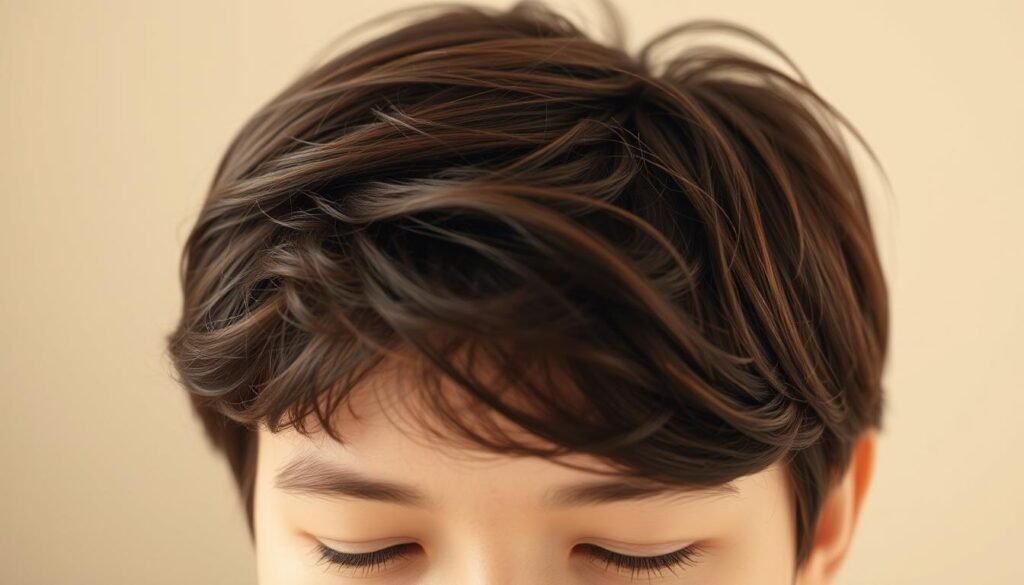Experiencing hair loss can be distressing, affecting not just your appearance but also your confidence. For millions of Americans, it’s a reality that requires a reliable and effective treatment.
Understanding the underlying causes of your hair loss is crucial in finding the right treatment. Genetics play a significant role, accounting for 95% of all cases of alopecia (baldness). Modern advancements have led to various treatments and solutions for thinning hair, ranging from FDA-approved medications to surgical interventions.
This comprehensive guide will explore the full spectrum of permanent hair loss solutions available, helping you navigate your options for restoring a fuller head of hair.
Key Takeaways
- Understanding the cause of your hair loss is key to finding an effective treatment.
- Genetics is the most common cause of hair loss in both men and women.
- Various treatments are available, including FDA-approved medications and surgical interventions.
- A comprehensive approach is necessary to determine the best solution for your specific situation.
- Restoring a fuller head of hair requires exploring the full spectrum of available permanent hair loss solutions.
Understanding Hair Loss: Causes and Types
Hair loss is a common concern affecting millions of people worldwide, with various underlying causes and types. It can be a distressing experience, impacting an individual’s self-esteem and overall well-being.
Common Types of Hair Loss
Hair loss can manifest in different forms, including androgenetic alopecia, alopecia areata, and trichotillomania. Androgenetic alopecia, also known as male or female pattern baldness, is the most common type, characterized by a gradual thinning of hair due to hormonal influences and genetics.
For instance, women may experience temporary hair loss after childbirth due to hormonal changes. In some cases, individuals may have trichotillomania, a condition where there’s a compulsion to pull out scalp hair, eyebrow hair, or eyelashes.
Underlying Causes of Hair Loss
Several factors contribute to hair loss, including genetic predisposition, hormonal imbalances, nutritional deficiencies, certain medications, and chronic stress. According to Mayo Clinic, these factors can significantly impact hair growth cycles.
- Genetic predisposition is a primary factor in androgenetic alopecia, with DHT binding to hair follicles, causing them to shrink.
- Hormonal changes during pregnancy, menopause, or thyroid disorders can affect hair growth.
- Nutritional deficiencies, particularly in iron, protein, zinc, and vitamins B and D, can weaken hair.
| Cause | Effect on Hair |
|---|---|
| Hormonal Imbalance | Disrupts hair growth cycle |
| Nutritional Deficiency | Weakens hair and impairs new growth |
| Chronic Stress | Pushes more follicles into the resting phase |
Understanding these causes and types is crucial for addressing hair loss effectively. For more information on hair and scalp conditions, visit Trisha Khanna MD.
Diagnosing Your Hair Loss Condition
Understanding the underlying cause of your hair loss is essential for proper treatment. Diagnosing the condition involves a comprehensive approach to identify the root cause and determine the best course of action.
When to See a Healthcare Provider
If you’re experiencing significant hair loss, it’s crucial to consult a doctor to rule out any underlying health issues. A healthcare provider can help identify the cause and recommend appropriate treatment.
What to Expect During Diagnosis
During your initial consultation, the doctor will conduct a thorough examination, including a review of your medical history and a physical examination of your scalp. The diagnosis may involve a pull test to assess hair shedding, blood tests to check for nutritional deficiencies or hormonal imbalances, or a scalp biopsy to determine the specific type of hair loss. After determining the cause, your provider will discuss your health goals and develop a treatment plan to manage your condition.
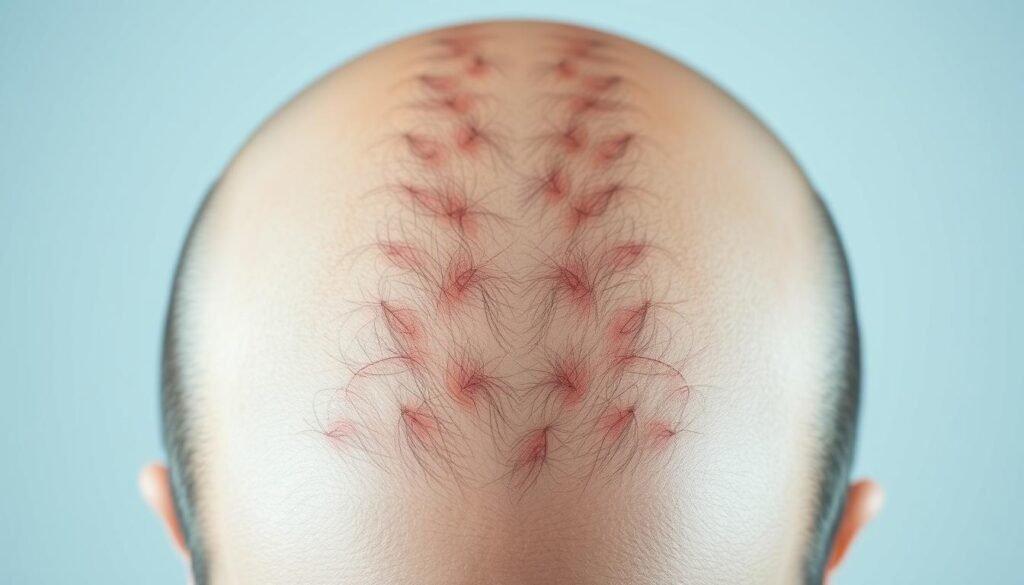
FDA-Approved Medications for Permanent Hair Loss Solutions
FDA-approved medications offer a reliable approach to tackling hair loss for many individuals. These treatments have undergone rigorous testing and have been proven effective in promoting hair growth and reducing further loss.
Minoxidil (Rogaine): Application and Effectiveness
Minoxidil is a topical solution applied directly to the scalp to stimulate hair growth. It is available over-the-counter and has been shown to be effective in slowing down hair loss and promoting new hair growth. To maximize its effectiveness, consistent application is necessary.
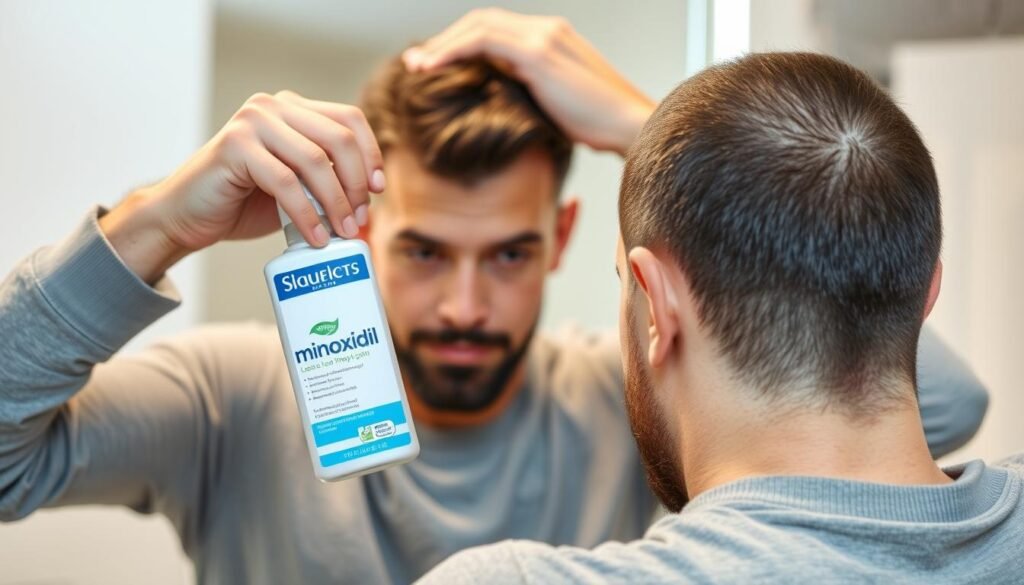
Finasteride (Propecia): Benefits and Limitations
Finasteride is an oral medication that works by blocking the production of dihydrotestosterone (DHT), a hormone that contributes to hair loss. It is available by prescription only and has been shown to be effective in treating male pattern baldness. However, it may have side effects, and its use should be carefully considered.

Oral Minoxidil and Dutasteride: Emerging Options
Oral minoxidil and dutasteride are emerging as potential treatments for hair loss. Oral minoxidil, originally a blood pressure medication, has shown promise in promoting hair growth at low doses. Dutasteride, similar to finasteride, works by inhibiting DHT production but is not FDA-approved for hair loss treatment. Both require careful monitoring due to potential side effects.
For more information on hair loss treatments, visit Cleveland Clinic’s Hair Loss Treatments page.
Surgical Hair Restoration Techniques
Surgical techniques for hair restoration have evolved, offering effective and long-lasting results. These procedures are designed to restore a natural-looking hairline and improve the overall appearance of the hair.
Hair Transplantation Methods
Hair transplantation involves relocating hair follicles from the donor site to the recipient site on the scalp. This procedure is typically performed under local anesthesia and can take several hours to complete. The transplanted hair will initially shed, but the follicles will begin producing new hair growth after a few months.
The most common side effects of hair transplantation include swelling, bruising, and crusting on the scalp. These effects are usually temporary and subside within one to three weeks.
Scalp Reduction Surgery
Scalp reduction surgery involves removing the balding area of the scalp and then bringing the hair-bearing scalp together. This procedure is often used in conjunction with hair transplantation to achieve optimal results. While it can be effective, scalp reduction surgery may result in more pain and a longer recovery time compared to hair transplantation.
Recovery and Results from Surgical Procedures
After surgical hair restoration, patients can expect some swelling, redness, and scabbing at both the donor and recipient sites. Most surgeons recommend taking 1-2 weeks off work and avoiding strenuous activities for at least 2-3 weeks. The transplanted hair will typically shed within 2-4 weeks, but new growth will begin after 3-4 months. Full results can take 12-18 months to develop.
Advanced Non-Surgical Permanent Hair Loss Solutions
The quest for a fuller head of hair has led to the development of advanced non-surgical hair loss treatments. These innovative solutions cater to individuals experiencing hair loss, offering promising results without the need for surgical intervention.
Platelet-Rich Plasma (PRP) Therapy
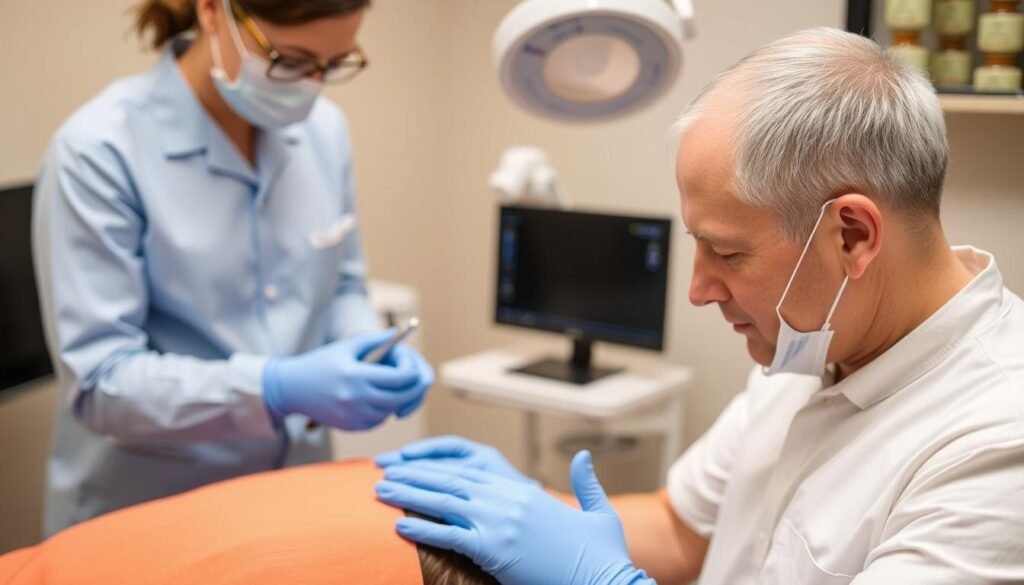
Platelet-Rich Plasma (PRP) Therapy is a revolutionary treatment that utilizes the patient’s own platelets to stimulate hair growth. By injecting PRP into the scalp, it promotes the strengthening of hair follicles and encourages new hair growth.
Low-Level Laser Therapy Devices
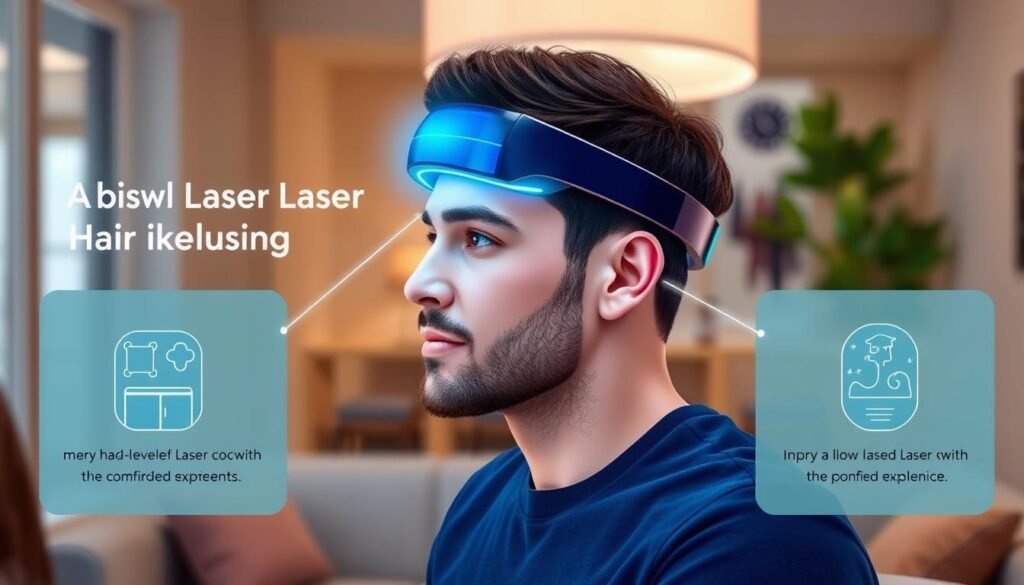
Low-Level Laser Therapy (LLLT) devices are designed to stimulate hair follicles and promote hair growth. These devices, including caps, combs, and helmets, use specific wavelengths of red light to increase blood flow to the scalp, energizing dormant follicles.
The benefits of LLLT include:
- Increased hair count and improved hair strength and thickness
- Slowing the progression of pattern hair loss in both men and women
- A painless, non-invasive treatment with virtually no side effects
- Optimal results when used as part of a comprehensive treatment approach
Natural Approaches to Combat Hair Loss
While medical treatments are available for hair loss, natural approaches can also play a significant role in promoting hair health. A healthcare provider can help determine the cause of hair thinning or hair loss to manage it effectively.
Nutritional Support for Hair Health
A well-balanced diet rich in vitamins and minerals is crucial for maintaining healthy hair. Nutrients like iron, zinc, and biotin support hair growth. Including foods that are rich in these nutrients, such as leafy greens, nuts, and fish, can help promote hair health. For more information on maintaining scalp and hair health, visit skin, hair, and scalp health resources.

Stress Management and Lifestyle Changes
Chronic stress can lead to increased cortisol levels, disrupting the hair growth cycle and causing more hair to enter the resting phase, leading to increased shedding. Practicing stress reduction techniques such as meditation, yoga, or deep breathing exercises can help normalize hormone levels and potentially improve hair retention. Additionally, avoiding harsh hair treatments, excessive heat styling, and tight hairstyles can prevent mechanical damage that contributes to hair thinning.
Choosing the Right Hair Loss Solution for Your Needs
Selecting the most effective hair loss treatment can be a daunting task, given the numerous options available. When dealing with hair loss, it’s crucial to understand the various treatments and medications that can help.
Factors to Consider When Selecting a Treatment
When choosing a hair loss treatment, several factors come into play. The effectiveness of over-the-counter (OTC) products containing ingredients like Biotin, Zinc, and Collagen should be considered. If these aren’t effective, a healthcare provider may recommend specific hair regrowth medications. It’s essential to evaluate the underlying cause of your hair loss and your overall health.
The table below summarizes key factors to consider:
| Factor | Description | Importance |
|---|---|---|
| Cause of Hair Loss | Understanding the root cause of your hair loss is crucial. | High |
| Overall Health | Your general health can impact the effectiveness of treatments. | High |
| Treatment Options | Evaluating available treatments, including OTC products and prescription medications. | High |
Combining Treatments for Optimal Results
Combining different treatments often yields better results than using a single treatment. For instance, the combination of finasteride and minoxidil is well-studied and shows synergistic effects in promoting hair growth. Adding low-level laser therapy or PRP therapy to your treatment regimen can further enhance results.
Some effective combinations include:
- Finasteride and minoxidil for enhanced hair growth
- Low-level laser therapy with medications for improved follicle health
- PRP therapy with surgical procedures for better graft survival
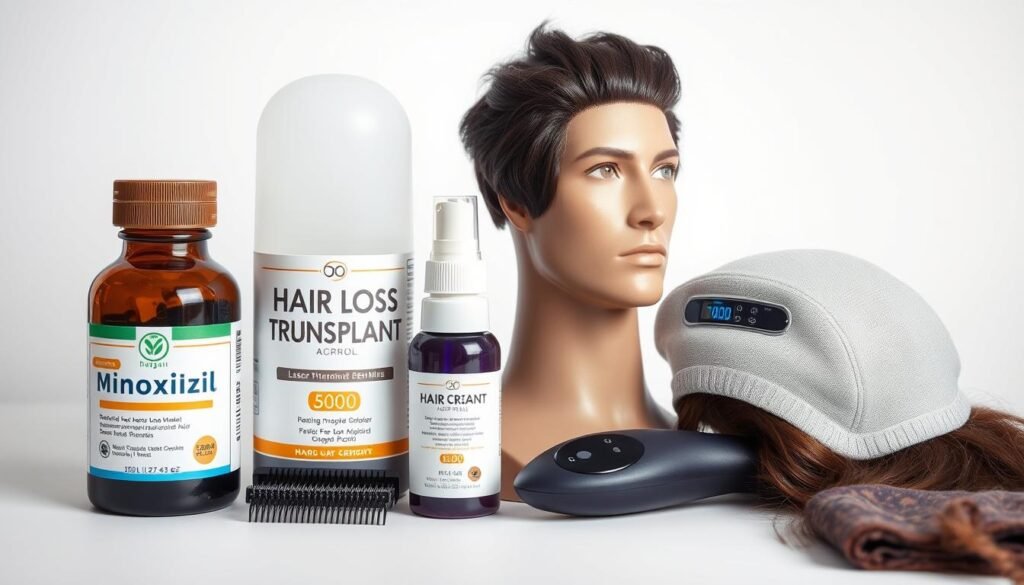
Conclusion: Taking Action Against Hair Loss
Taking control of hair loss begins with understanding the condition and exploring the various permanent hair loss solutions on offer. It’s typical to lose some hair daily, but when hair loss becomes excessive due to illness, hormonal changes, stress, aging, or inherited conditions, it’s crucial to seek professional advice. Consulting a healthcare provider can help determine the cause and identify effective treatments. With a range of options available, including medications like minoxidil and finasteride, surgical procedures, and emerging therapies, most individuals can find a suitable approach. For personalized guidance, visit our resource center. By taking early action and maintaining realistic expectations, individuals can effectively manage hair loss and improve their quality of life.

